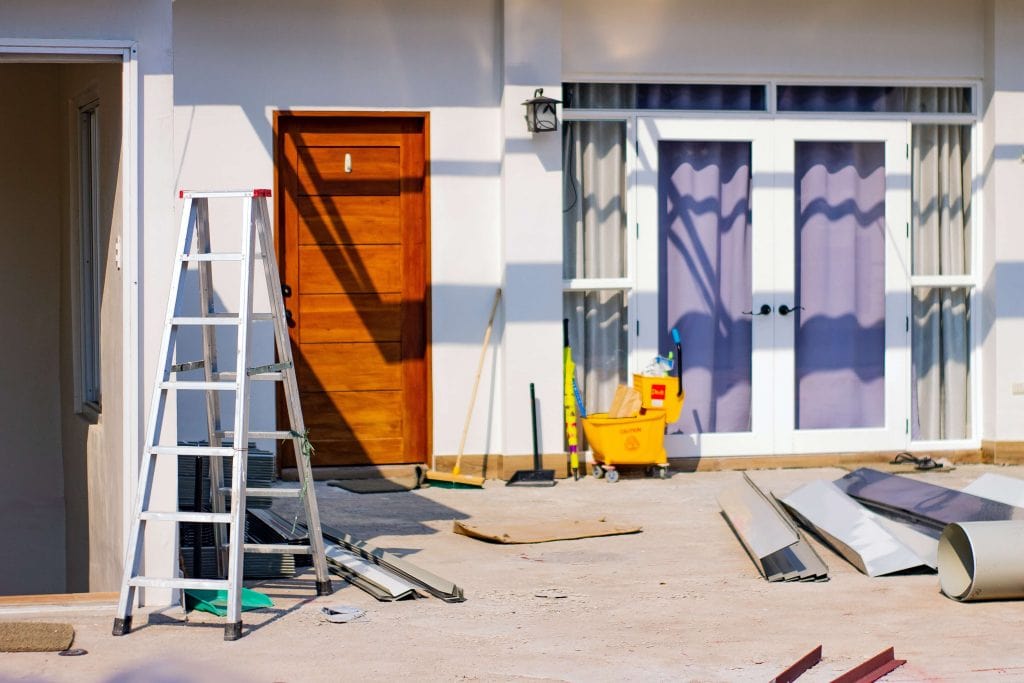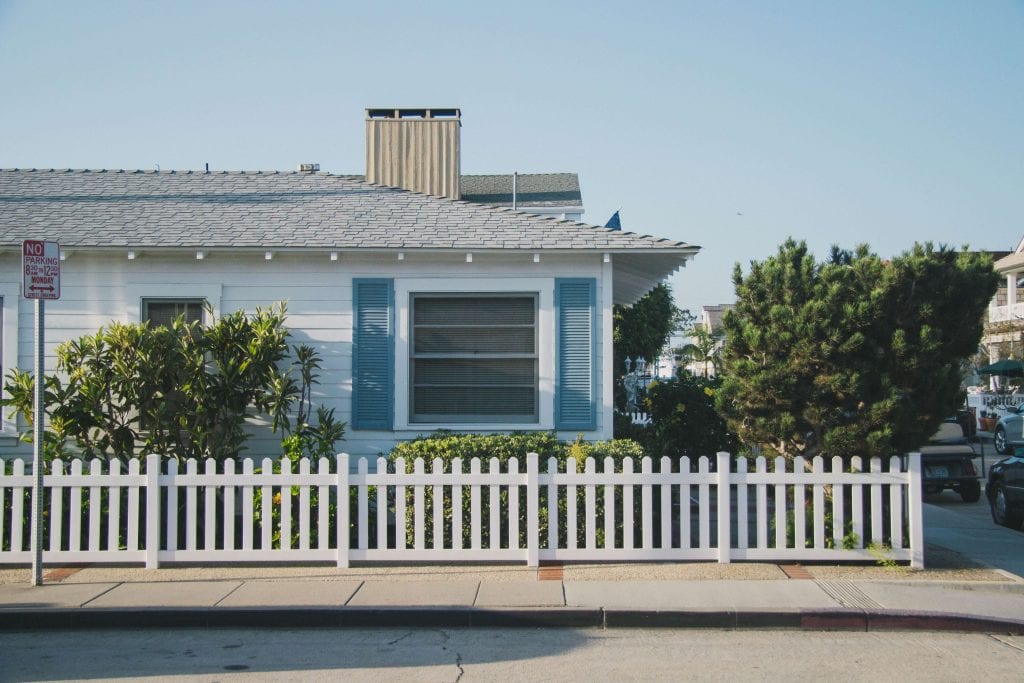Recladding replaces or updates a building’s outer layer, which serves as a protective and aesthetic covering. The cladding protects the structure from environmental elements like rain, wind, and extreme temperatures while enhancing its appearance.
However, recladding is not just about improving a building’s appearance—it’s essential for maintaining your home’s structural integrity and safety. Especially in light of recent building safety concerns, recladding has become the key to insurance compliance and property value.
Let’s get straight to the point.
Recladding, which involves updating a building’s outer protective layer, is essential for aesthetic enhancement and structural safety. In Australia, recladding costs vary widely, influenced by factors like timber damage, material choice, and labour costs. Single-story projects average AUD 40,000, and two-story projects reach AUD 80,000.
Beyond cost, recladding is important for compliance with fire safety standards, as updated regulations mandate non-flammable materials due to past incidents. Delaying recladding can lead to higher repair costs, reduced property value, and legal obligations during resale.
Recladding protects against weather and environmental damage and boosts property value, ensuring long-term safety and compliance.
Estimating Recladding Costs In Australia
Recladding a home can significantly enhance its aesthetic appeal, energy efficiency, and structural integrity. However, understanding the recladding costs is vital for homeowners planning such renovations.
Factors Influencing Costs
Several variables affect the total price of recladding, including:
- Timber Damage: One of the primary factors influencing recladding costs is the extent of timber damage. Moisture tests, often performed to assess wood condition, only provide spot checks, which means they might not reveal the full scope of underlying issues. In some cases, homes may require complete timber replacement, which can significantly increase overall costs.
- Replacement of Damaged Wood: If inspections reveal moisture, mould, or rot, the affected wood must be replaced to ensure the home’s safety and longevity. For example, wood showing mould or black spores must be carefully removed and replaced. This process can add significant expenses, often roughly AUD 10,000 per level in labour and material costs. If the damage is widespread, these costs can escalate quickly.
- Material Choice: The type of cladding material chosen will also heavily influence the total cost. Common materials include vinyl, timber, fibre cement, metal, and brick, each varying in price. Vinyl cladding is typically the most budget-friendly option, while brick and high-quality timber can be considerably more expensive.
- Labour Costs: Labor costs can vary across regions in Australia, with urban areas often having higher rates than rural locations. The complexity of the recladding project, such as the need for scaffolding or working around existing structures, can further impact labour costs.
Common Cost Estimates
When considering recladding, homeowners can expect the following general cost estimates:
- Single-Story Home: The cost of a single-story home requiring full recladding and timber replacement can be around AUD 40,000. This estimate may include labour, materials, and repairs to underlying structures.
- Two-Story Home: For larger homes, such as a two-story residence, costs can escalate up to AUD 80,000, depending on the extent of the damage and the materials chosen. Additional scaffolding and labour for higher elevations can also contribute to increased costs.
However, it’s essential to note that many recladding projects involve only small areas of timber replacement. In such cases, homeowners may find the overall expense significantly lower than these estimates, especially if the damage is minimal and localised.

Why Recladding Costs Vary?
Several factors influence the cost of recladding a building. Whether you are working with a single-story home or a more complex multi-level structure, the price can range significantly. Some of the key factors include:
- Size of the Building: Larger homes or buildings will incur higher costs due to the increased materials and labour required.
- Building Design: Homes with complex architectural designs or multiple stories will likely cost more as they require more specialised work.
- Location: Buildings in hard-to-reach areas, such as those on steep slopes, will need expensive scaffolding or other equipment to complete the recladding safely.
- Material Choice: Different materials have different price points, durability, and maintenance needs.
Understanding these cost factors upfront is essential for setting realistic expectations for your recladding project.
Why Recladding Is A Necessary Investment?
Recladding your home is not just a cosmetic upgrade; it’s an essential investment for legal, safety, and financial reasons.
Legal And Safety Considerations
- Changes in Building Safety Regulations: The demand for recladding has increased significantly in response to revised building safety codes, particularly following tragic incidents like the Lacrosse Tower fire in Melbourne in 2014.
- Stricter Fire Safety Standards: In the wake of these disasters, governments have implemented stricter regulations to enhance fire safety. These changes require builders and homeowners to use more fire-resistant cladding materials.
- Flammable Cladding Concerns: The Lacrosse incident highlighted the dangers of flammable cladding materials. As a result, authorities are now mandating using non-combustible options, such as aluminium and high-quality materials with fireproofing properties.
Financial Impact Of Delayed Repairs
- Increased Structural Damage: Delaying recladding can lead to significant structural issues. For instance, water leaks can weaken timber frameworks, leading to more extensive and costly repairs.
- Disclosure Obligations When Selling: When selling your home, you must disclose any unresolved structural problems to potential buyers.
- Legal Repercussions: Attempting to conceal these issues can result in legal ramifications, including potential lawsuits from buyers if they discover problems after the sale.
- Reduced Property Value: Structural issues can substantially decrease your property’s market value. Proactively addressing recladding and associated repairs can help maintain or enhance your home’s worth.
Benefits Of Recladding With Modern Materials
Advantages Of Cladding
Cladding provides more than just a protective barrier—it also offers aesthetic and practical benefits. Here are some reasons why homeowners choose to reclad their homes:
- Low Maintenance: Modern cladding materials like vinyl and aluminium require far less maintenance than traditional wood or plaster.
- Increased Home Value: Recladding gives your home a fresh, updated look, which can significantly increase its resale value.
- Weather Resistance: High-quality cladding materials protect homes from extreme weather conditions, reducing the risk of damage from water, wind, and sun.
- Safety and Compliance: Using non-flammable cladding materials, as required by updated building codes, ensures that your home meets modern fire safety standards.

Artistic And Visual Appeal
Cladding allows for customisation and can greatly enhance the visual appeal of your home. For example, stone or brick veneer cladding comes in various textures and colours, allowing homeowners a unique look. The variety of styles—from rustic to contemporary—makes cladding an excellent choice for boosting curb appeal.
Conclusion
In summary, recladding is critical for ensuring your home’s longevity, safety, and value. While the upfront costs might seem high—especially if you require extensive timber replacement or are using premium materials like stone or aluminium—it’s an investment that pays off in the long run.
Not only will recladding protect your home from environmental damage, but it will also enhance its appearance and meet the latest safety regulations. Whether you choose durable vinyl, stylish stone veneer, or robust aluminium, recladding is a decision that benefits both your property’s functionality and its market value.
Properly recladding your home will ensure that it will remain a safe and beautiful space for years to come.
FAQs About Recladding
Can You Live In A House While Recladding?
Yes, you certainly can. It’s a great time to upgrade potential areas like bathrooms, ensuites and kitchens. These are just some of the most common upgrades clients would like to add to the consented-reclad project. Outdoor entertaining areas are another area of demand.
Does Recladding Require A Building Consent?
To carry out re-cladding work, you must apply for building consent even if the new cladding is the same as the removed one.
What Is The Biggest You Can Build Without Planning Permission?
The recent relaxation of permitted developments means that homeowners can add extensions without planning permissions. You can add a home extension or conservatory up to six metres or eight metres if your home is detached without needing to apply for planning permission.
Will Banks Lend On Leaky Homes?
Typically, getting bank approval for a plaster house will be tougher. At the very least, they will require a building inspection and probably a registered valuation. And they will unlikely lend over 80%.
What Is The Cheapest Way To Clad A House?
When considering lifetime costs, sheet steel is considered the cheapest option, followed by sheet plywood. PVC, fibre cement, and timber weatherboards are the more expensive options.

